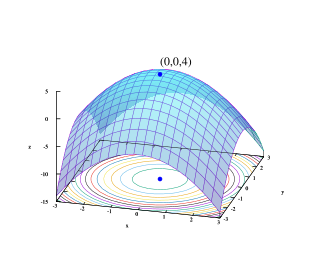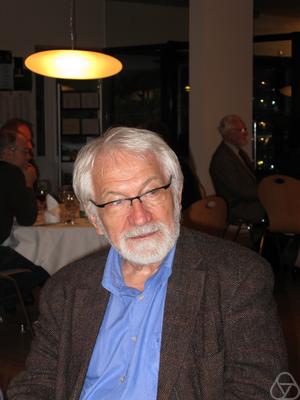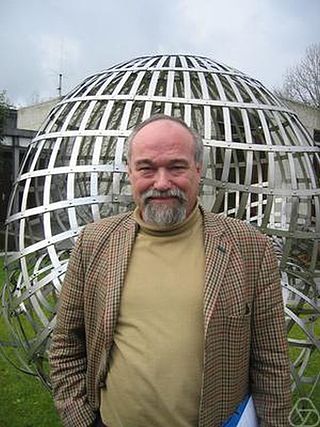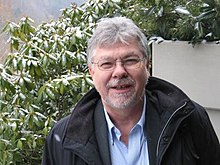Academic profile
Hans Georg Bock graduated from University of Cologne in 1974 with a diploma thesis in mathematics titled "Numerische Optimierung zustandsbeschränkter parameterabhängiger Prozesse mit linear auftretender Steuerung unter Anwendung der Mehrzielmethode" (Numerical optimization of state-constrained parameter-dependent processes with linearly entering controls by application of the direct multiple shooting method) completed under the supervision of professor Roland Z. Bulirsch.
With his PhD thesis "Randwertproblemmethoden zur Parameteridentifizierung in Systemen nichtlinearer Differentialgleichungen" (Boundary-value problem methods for parameter estimation in systems of nonlinear differential equations) completed under the supervision of Jens Frehse and Roland Z. Bulirsch, he received a Ph.D. in applied mathematics from the University of Bonn in 1986.
After staying in Heidelberg for two years as a visiting professor for numerical mathematics from 1987 to 1988, he accepted a full professorship at the University of Augsburg. In 1991 Hans Georg Bock accepted a call onto the chair for scientific computing and optimization at Heidelberg University.

Mathematical optimization or mathematical programming is the selection of a best element, with regard to some criterion, from some set of available alternatives. It is generally divided into two subfields: discrete optimization and continuous optimization. Optimization problems of sorts arise in all quantitative disciplines from computer science and engineering to operations research and economics, and the development of solution methods has been of interest in mathematics for centuries.
In computational intelligence (CI), an evolutionary algorithm (EA) is a subset of evolutionary computation, a generic population-based metaheuristic optimization algorithm. An EA uses mechanisms inspired by biological evolution, such as reproduction, mutation, recombination, and selection. Candidate solutions to the optimization problem play the role of individuals in a population, and the fitness function determines the quality of the solutions. Evolution of the population then takes place after the repeated application of the above operators.
Model predictive control (MPC) is an advanced method of process control that is used to control a process while satisfying a set of constraints. It has been in use in the process industries in chemical plants and oil refineries since the 1980s. In recent years it has also been used in power system balancing models and in power electronics. Model predictive controllers rely on dynamic models of the process, most often linear empirical models obtained by system identification. The main advantage of MPC is the fact that it allows the current timeslot to be optimized, while keeping future timeslots in account. This is achieved by optimizing a finite time-horizon, but only implementing the current timeslot and then optimizing again, repeatedly, thus differing from a linear–quadratic regulator (LQR). Also MPC has the ability to anticipate future events and can take control actions accordingly. PID controllers do not have this predictive ability. MPC is nearly universally implemented as a digital control, although there is research into achieving faster response times with specially designed analog circuitry.
Computational science, also known as scientific computing, technical computing or scientific computation (SC), is an area of science that uses advanced computing capabilities to understand and solve complex physical problems. This includes
Numerical methods for partial differential equations is the branch of numerical analysis that studies the numerical solution of partial differential equations (PDEs).
Trajectory optimization is the process of designing a trajectory that minimizes some measure of performance while satisfying a set of constraints. Generally speaking, trajectory optimization is a technique for computing an open-loop solution to an optimal control problem. It is often used for systems where computing the full closed-loop solution is not required, impractical or impossible. If a trajectory optimization problem can be solved at a rate given by the inverse of the Lipschitz constant, then it can be used iteratively to generate a closed-loop solution in the sense of Caratheodory. If only the first step of the trajectory is executed for an infinite-horizon problem, then this is known as Model Predictive Control (MPC).

Stanley Osher is an American mathematician, known for his many contributions in shock capturing, level-set methods, and PDE-based methods in computer vision and image processing. Osher is a professor at the University of California, Los Angeles (UCLA), Director of Special Projects in the Institute for Pure and Applied Mathematics (IPAM) and member of the California NanoSystems Institute (CNSI) at UCLA.
The Faculty of Mathematics and Computer Science is one of twelve faculties at the University of Heidelberg. It comprises the Institute of Mathematics, the Institute of Applied Mathematics, the School of Applied Sciences, and the Institute of Computer Science. The faculty maintains close relationships to the Interdisciplinary Center for Scientific Computing (IWR) and the Mathematics Center Heidelberg (MATCH). The first chair of mathematics was entrusted to the physician Jacob Curio in the year 1547.

The Interdisciplinary Center for Scientific Computing is a scientific research institute of the Heidelberg University, Germany. It centralizes scientific activity and promotes research and work in scientific computing. Founded in 1987 by the Heidelberg University and the state of Baden-Württemberg, IWR participates in joint project and cooperations with industry in Germany as well as abroad. As a research institute with about 380 staff, IWR is considered one of the world's largest research centers for scientific computing.

Willi Jäger is a German mathematician.
JModelica.org is a commercial software platform based on the Modelica modeling language for modeling, simulating, optimizing and analyzing complex dynamic systems. The platform is maintained and developed by Modelon AB in collaboration with academic and industrial institutions, notably Lund University and the Lund Center for Control of Complex Systems (LCCC). The platform has been used in industrial projects with applications in robotics, vehicle systems, energy systems, CO2 separation and polyethylene production.
Optimization Toolbox is an optimization software package developed by MathWorks. It is an add-on product to MATLAB, and provides a library of solvers that can be used from the MATLAB environment. The toolbox was first released for MATLAB in 1990.
Model order reduction (MOR) is a technique for reducing the computational complexity of mathematical models in numerical simulations. As such it is closely related to the concept of metamodeling, with applications in all areas of mathematical modelling.

Christine A. Shoemaker joined the Department of Industrial Systems Engineering & Management and the Department of Civil and Environmental Engineering as NUS Distinguished Professor on 31 August 2015. Prof Shoemaker obtained her Ph.D. in Mathematics from the University of Southern California supervised by Richard Bellman in Dynamic Programming. Upon her graduation, she joined the School of Civil and Environmental Engineering and later the School of Operations Research and Information Engineering at Cornell University, Ithaca, NY, USA. She was promoted to full Professor in 1985. From 1985 to 1988, Professor Shoemaker was the Chair of the Department of Environmental Engineering at Cornell University. In 2002 Prof. Shoemaker was appointed the Joseph P. Ripley Professor of Engineering at Cornell University, USA. In 2015, Prof. Shoemaker became Distinguished Professor at National University of Singapore, in both Industrial Systems Engineering and Management Department and Civil and Environmental Engineering Department. While in Singapore she has worked with Singapore water agency to apply her global optimization algorithms to improve the selection of parameters for computationally expensive partial differential equation models for lake hydrodynamics and complex multi-species water quality elements. These results used her group’s new parallel algorithms.
Jorge Nocedal is an applied mathematician, computer scientist and the Walter P. Murphy professor at Northwestern University who in 2017 received the John Von Neumann Theory Prize. He was elected a member of the National Academy of Engineering in 2020.
Maria Emelianenko is a Russian-American applied mathematician and materials scientist known for her work in numerical algorithms, scientific computing, grain growth, and centroidal Voronoi tessellations. She is a professor of mathematical sciences at George Mason University.

Rolf Rannacher is a German mathematician and a professor of numerical analysis at Heidelberg University.
PDE-constrained optimization is a subset of mathematical optimization where at least one of the constraints may be expressed as a partial differential equation. Typical domains where these problems arise include aerodynamics, computational fluid dynamics, image segmentation, and inverse problems. A standard formulation of PDE-constrained optimization encountered in a number of disciplines is given by:

Physics-informed neural networks (PINNs) are a type of universal function approximators that can embed the knowledge of any physical laws that govern a given data-set in the learning process, and can be described by partial differential equations (PDEs). They overcome the low data availability of some biological and engineering systems that makes most state-of-the-art machine learning techniques lack robustness, rendering them ineffective in these scenarios. The prior knowledge of general physical laws acts in the training of neural networks (NNs) as a regularization agent that limits the space of admissible solutions, increasing the correctness of the function approximation. This way, embedding this prior information into a neural network results in enhancing the information content of the available data, facilitating the learning algorithm to capture the right solution and to generalize well even with a low amount of training examples.







